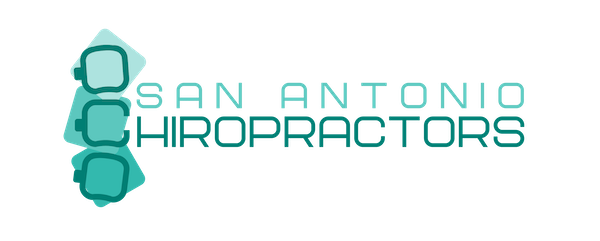
Chiropractic is a complementary medical practice that focuses on the diagnosis and treatment of mechanical disorders of the musculoskeletal system, especially the spine. Chiropractors use hands-on spinal manipulation and other alternative treatments to relieve pain and improve the function of the body. The theory behind chiropractic care is that proper alignment of the body’s musculoskeletal structure, particularly the spine, will enable the body to heal itself without surgery or medication.
Chiropractic adjustments involve the application of a controlled, sudden force to a joint, pushing it beyond its usual range of motion. This movement can result in an audible “pop” or “crack” sound, which is caused by the release of gas bubbles in the joint fluid. Chiropractors use their hands to apply pressure to the affected area, aiming to restore range of motion and reduce pain. While the adjustment itself may only take a few minutes, the entire treatment session may last up to an hour.
Chiropractic care is often used to treat back pain, neck pain, headaches, and other musculoskeletal conditions. It is considered a safe and effective alternative to traditional medical treatments, such as surgery and medication. However, as with any medical treatment, there are risks and potential side effects associated with chiropractic care. It is important to discuss any concerns or questions with a qualified healthcare provider before seeking chiropractic treatment.
Understanding Chiropractic
Chiropractic is a form of integrative medicine that focuses on the diagnosis and treatment of musculoskeletal disorders, primarily those related to the spine. Chiropractors are healthcare professionals who use a variety of manual techniques to adjust or manipulate the spine and other parts of the body.
Chiropractic treatment is based on the principle that the nervous system controls all bodily functions and that any disruption in the nervous system can lead to disease or dysfunction. Chiropractors believe that misalignments or subluxations in the spine can cause interference with the nervous system, leading to a variety of health problems.
Chiropractic therapy involves a range of techniques, including spinal adjustments, soft tissue therapy, and exercise prescription. The primary therapy used by chiropractors is spinal manipulation, where they use hands or instruments to apply force to a joint in the spine, moving the joint in a specific direction for better alignment.
Chiropractic adjustments aim to restore normal function to the spine and nervous system, thereby improving overall health and well-being. Chiropractors also work to identify and address any underlying causes of musculoskeletal disorders, such as poor posture or repetitive strain injuries.
While chiropractic is often associated with back pain, it can also be used to treat a wide range of conditions, including headaches, neck pain, joint pain, and other musculoskeletal disorders. Chiropractic treatment is generally safe and effective, with few side effects.
Overall, chiropractic is a valuable form of integrative medicine that can help improve function and reduce pain in the musculoskeletal system. By restoring normal function to the spine and nervous system, chiropractors aim to improve overall health and well-being.
The Role of the Spine
The spine is a complex structure of bones, muscles, ligaments, and nerves that supports the body and protects the spinal cord. The spinal cord is a bundle of nerves that runs down the middle of the spine and connects the brain to the rest of the body. The spine is divided into three main regions: the cervical spine (neck), the thoracic spine (mid-back), and the lumbar spine (lower back).
Chiropractic care focuses on the relationship between the spine and the nervous system. The theory behind chiropractic is that misalignments in the spine, called subluxations, can interfere with the nervous system and cause a variety of health problems.
Chiropractors use spinal manipulation, also known as spinal adjustments, to correct subluxations and improve spinal motion. Spinal manipulation involves applying a controlled, sudden force to a spinal joint to restore its normal function. This can be done by hand or with a small instrument.
By improving spinal motion and reducing nerve interference, chiropractic adjustments are believed to promote the body’s natural healing abilities. Chiropractors may also use other techniques, such as massage and stretching, to help relieve pain and improve function.
While chiropractic care is generally considered safe, there are some risks associated with spinal manipulation, particularly in people with certain medical conditions. It is important to discuss any concerns or medical conditions with a chiropractor before undergoing treatment.
Overall, the role of the spine in chiropractic care is central. By correcting subluxations and improving spinal function, chiropractors aim to promote overall health and wellness.
Conditions Treated by Chiropractors
Chiropractors are trained to diagnose and treat a variety of musculoskeletal conditions. They use a hands-on approach to manipulate the spine and other joints in the body to improve mobility and reduce pain.
Back Pain
Back pain is one of the most common reasons people seek chiropractic care. Chiropractors use spinal manipulation to improve spinal function and reduce pain in the back. They may also use other techniques, such as massage and stretching, to help alleviate back pain.
Neck Pain
Chiropractors can also treat neck pain. They use cervical manipulation to improve mobility in the neck and reduce pain. In addition, they may use other techniques, such as massage and stretching, to help alleviate neck pain.
Headaches
Chiropractic care can also be effective in treating headaches. Chiropractors can manipulate the spine and other joints to reduce tension and improve blood flow, which can help alleviate headaches. They may also provide advice on lifestyle changes that can help prevent headaches from occurring.
Arthritis
Chiropractors can also help manage arthritis pain. They use joint manipulation and other techniques to reduce inflammation and improve joint function. In addition, they may provide advice on lifestyle changes and exercises that can help manage arthritis symptoms.
Whiplash
Chiropractic care can also be effective in treating whiplash. Chiropractors can manipulate the spine and other joints to improve mobility and reduce pain. They may also provide advice on exercises and lifestyle changes that can help speed up the healing process.
Sciatica
Sciatica is a condition that causes pain in the lower back and legs. Chiropractors can use spinal manipulation to reduce pressure on the sciatic nerve and improve mobility in the lower back and legs. They may also provide advice on exercises and lifestyle changes that can help manage sciatica symptoms.
Chronic Pain
Chiropractic care can be effective in managing chronic pain. Chiropractors can use a variety of techniques, such as spinal manipulation, massage, and stretching, to reduce pain and improve mobility. In addition, they may provide advice on lifestyle changes and exercises that can help manage chronic pain.
Overall, chiropractors can treat a variety of conditions related to the musculoskeletal system. They use a hands-on approach to manipulate the spine and other joints in the body to improve mobility and reduce pain. If you are experiencing any of the conditions listed above, consider visiting a chiropractor to see if chiropractic care can help alleviate your symptoms.
Chiropractic Techniques and Therapies
Chiropractic adjustments or spinal manipulations are the primary techniques used by chiropractors to treat patients. During a chiropractic adjustment, the chiropractor applies a controlled, sudden force to a spinal joint using their hands or a small instrument. This force aims to improve spinal motion and physical function by correcting misalignments and restoring proper joint movement.
Chiropractors may use various techniques depending on the patient’s condition and preferences. These techniques include:
- Direct Thrust Technique: A high-velocity, low-amplitude thrust that aims to restore proper joint motion and function.
- Spinal Mobilization: A low-velocity, low-amplitude technique that gently moves the joint through its range of motion to improve mobility.
- Articulatory Technique: A gentle, rhythmic motion that aims to improve joint mobility and reduce pain.
- Myofascial Release: A technique that involves applying sustained pressure to the soft tissues surrounding the joint to release tension and improve mobility.
- Muscle Energy Technique: A technique that involves the patient contracting their muscles while the chiropractor applies pressure to the joint to improve mobility.
- Functional Technique: A technique that involves the chiropractor applying pressure to specific points on the joint to improve mobility and function.
- Flexion-Distraction: A technique that involves the patient lying on a special table while the chiropractor applies gentle traction to the spine to relieve pressure on the discs and nerves.
- Gonstead Method: A technique that involves the chiropractor using a specific set of criteria to determine which joints to adjust and how to adjust them.
- Activator: A technique that uses a small instrument to deliver a precise, gentle thrust to the joint.
- Thompson: A technique that involves the patient lying on a special table that drops slightly while the chiropractor applies a quick thrust to the joint.
In addition to spinal manipulations, chiropractors may also use other therapies to help patients achieve optimal physical function. These therapies include:
- Exercise: Chiropractors may recommend specific exercises to help patients improve their physical function and reduce pain.
- Nutrition: Chiropractors may provide nutritional counseling to help patients achieve optimal health and wellness.
- Physical Therapy: Chiropractors may work with physical therapists to develop a comprehensive treatment plan for patients.
- Kinesio Taping: Chiropractors may use kinesio tape to support injured joints and muscles and improve mobility.
- Stretching: Chiropractors may recommend specific stretches to help patients improve their flexibility and reduce pain.
Overall, chiropractic techniques and therapies aim to improve joint motion, physical function, and overall health and wellness. By correcting misalignments and restoring proper joint movement, chiropractors can help patients achieve optimal physical function and reduce pain.
Potential Risks and Side Effects
Chiropractic care is generally considered safe when performed by a licensed and trained chiropractor. However, as with any medical treatment, there are potential risks and side effects that patients should be aware of.
Stroke
One of the most serious potential risks associated with chiropractic care is stroke. A stroke occurs when blood flow to the brain is interrupted, either by a blood clot or a ruptured blood vessel. In rare cases, neck manipulation performed by a chiropractor has been linked to stroke. According to a study published in the journal Neurology, patients who had visited a chiropractor in the week before suffering a stroke were six times more likely to have had a neck manipulation than those who had not.
Side Effects
While serious complications from chiropractic care are rare, some patients may experience mild side effects. These can include headache, fatigue, and increased pain or discomfort in the treated area. According to a systematic review published in the journal PLOS One, up to 60% of patients experience short-term adverse effects such as these after spinal manipulation.
Cauda Equina Syndrome
Cauda equina syndrome is a rare but serious condition that can occur when the bundle of nerves at the base of the spinal cord is compressed. While cauda equina syndrome is typically caused by a herniated disc, it has been reported in rare cases following chiropractic manipulation of the lumbar spine. Patients who experience severe low back pain, numbness or tingling in the legs, or difficulty controlling their bladder or bowels after chiropractic care should seek immediate medical attention.
It is important for patients to discuss any potential risks or concerns with their chiropractor before beginning treatment. Patients should also inform their chiropractor of any pre-existing medical conditions or medications they are taking, as these may affect the safety and effectiveness of chiropractic care.
Chiropractic Education and Licensing
Becoming a licensed chiropractor requires extensive education and training. A candidate must first complete a bachelor’s degree program, which usually takes four years, with a focus on biology and other sciences. After that, they must attend an accredited chiropractic college, which takes an additional three to five years.
During their time at chiropractic college, students receive extensive training in anatomy, physiology, and other related subjects. They also receive training in chiropractic techniques and patient care. This includes hands-on training in spinal manipulation and other chiropractic techniques.
After completing their graduate degree, a chiropractor must pass the National Board of Chiropractic Examiners exam and any other examinations required by the state in which they intend to practice. The exam is designed to test the candidate’s knowledge and readiness to practice as a licensed chiropractor.
Licensed chiropractors are trained specialists who can diagnose and treat a wide range of musculoskeletal conditions. They are also trained to work with patients of all ages, including children and infants. Some chiropractors specialize in pediatrics and work primarily with children.
In summary, chiropractic education and licensing involves completing a bachelor’s degree program, attending an accredited chiropractic college, passing the National Board of Chiropractic Examiners exam, and any other state-required exams. Chiropractors are trained specialists who can diagnose and treat musculoskeletal conditions and work with patients of all ages.
Chiropractic Examination and Diagnosis
Before treatment, a chiropractor will perform a thorough examination and diagnosis to determine the underlying cause of the patient’s pain or discomfort. The examination will typically include a health history, physical examination, and diagnostic imaging if necessary.
During the health history, the chiropractor will ask the patient questions about their symptoms, medical history, lifestyle, and any previous treatments they have received. This information will help the chiropractor understand the patient’s overall health and identify any underlying conditions that may be contributing to their pain.
The physical examination will involve a series of tests to evaluate the patient’s posture, range of motion, and joint function. The chiropractor may also perform postural testing to identify any imbalances or misalignments in the spine.
Diagnostic imaging, such as X-rays, may be used to provide a more detailed view of the patient’s spine and help the chiropractor identify any structural abnormalities or injuries.
Once the examination is complete, the chiropractor will analyze the results to determine the most appropriate course of treatment. This may involve spinal manipulation, massage, stretching, or other techniques to help restore proper alignment and function to the spine and other joints.
Overall, chiropractic examination and diagnosis is a thorough and comprehensive process that allows chiropractors to identify the root cause of their patient’s pain and develop an effective treatment plan to address it.
Chiropractic Treatment Plan
Chiropractic treatment plans are designed to provide patients with a roadmap for their care. These plans are typically tailored to the individual patient’s needs and may include a combination of adjustments, rehabilitation exercises, and other forms of therapy.
Chiropractic adjustments are a cornerstone of chiropractic treatment plans. These are manual manipulations of the spine that are designed to improve spinal motion and overall physical function. Adjustments are typically performed by a licensed chiropractor, who uses their hands or a small instrument to apply a controlled, sudden force to a spinal joint.
The frequency and duration of chiropractic adjustments will vary depending on the patient’s condition and the severity of their symptoms. In general, most patients will require 1 to 3 chiropractic visits per week for 2 to 4 weeks, followed by a re-examination by the chiropractor. Some research suggests that having a few chiropractic treatments per week for a few weeks may be beneficial for reducing back pain Spine-health.
Chiropractic treatment plans may also include rehabilitation exercises to help patients regain strength, flexibility, and range of motion. These exercises may be performed under the guidance of a chiropractor or other healthcare professional, and may include stretching, resistance training, and other forms of exercise.
In addition to adjustments and rehabilitation exercises, chiropractic treatment plans may also include other forms of therapy, such as massage, acupuncture, or osteopathy. These integrative medicine experts may work in conjunction with a chiropractor to provide a comprehensive treatment plan that addresses all aspects of the patient’s care Mayo Clinic.
Overall, chiropractic treatment plans are designed to provide patients with a holistic approach to patient care. By addressing the underlying causes of a patient’s symptoms and providing them with a customized treatment plan, chiropractors can help patients achieve optimal health and wellness.
Chiropractic vs Conventional Medicine
Chiropractic treatment and conventional medical treatment have fundamental differences in their approach to health and healing. While conventional medicine focuses on treating symptoms and diseases, chiropractic treatment focuses on the relationship between the spine and the body’s overall health.
Conventional medicine often uses medication and surgery to treat conditions such as ligament, cartilage, and tendon injuries. Chiropractic treatment, on the other hand, uses spinal adjustments and other non-invasive techniques to promote healing.
Chiropractors often take a more holistic approach to patient care, considering the patient’s medical history and overall health rather than just treating the specific condition. They work to identify the root cause of the patient’s symptoms and use natural methods to promote healing.
Chiropractic care is often seen as a complementary treatment to conventional medical treatment, as it can be used in conjunction with other treatments to promote overall health and wellness. Many Americans seek chiropractic treatment to alleviate pain and improve their quality of life.
While chiropractic treatment may not be appropriate for all conditions, it can be a safe and effective alternative to conventional medical treatment for many patients. It is important for patients to discuss their options with their healthcare provider and consider all available treatment options before making a decision.
| Chiropractic Treatment | Conventional Medical Treatment |
|---|---|
| Focuses on the relationship between the spine and overall health | Focuses on treating symptoms and diseases |
| Uses non-invasive techniques such as spinal adjustments | Uses medication and surgery |
| Takes a holistic approach to patient care | Treats the specific condition |
| Considers the patient’s medical history and overall health | May not consider the patient’s overall health |
| Can be used in conjunction with other treatments | May not be complementary to other treatments |
In summary, chiropractic treatment and conventional medical treatment have different approaches to health and healing. While both can be effective in treating certain conditions, patients should consider all available treatment options and work with their healthcare provider to determine the best course of action for their individual needs.


